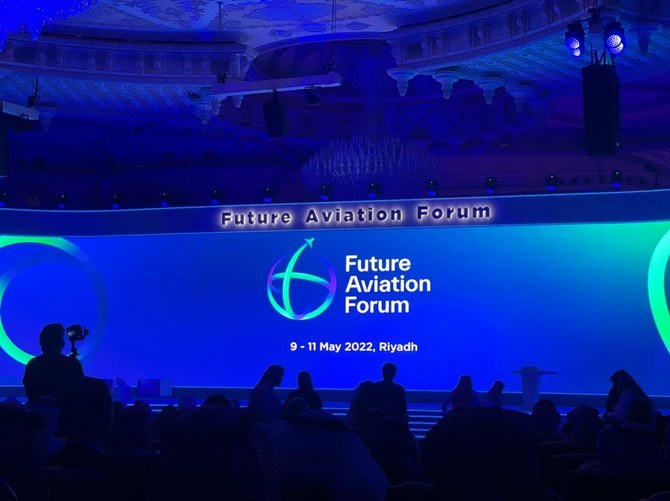RIYADH: Saudi Arabia’s newly developed international travel policy has received positive responses from the industry, with key aviation leaders calling it a crucial step at a time when the sector is recovering from the pandemic.
Aimed at smoothing the process of international air travel, the Harmonizing Air Travel policy, which was developed in cooperation with the UN’s International Civil Aviation Organization, will be officially presented at the 41st ICAO General Assembly later in 2022 for approval from member states.
Announced during the Future Aviation Forum in Riyadh, the policy initiative has impressed industry experts and leaders attending the event.
A platform for swift communication between countries
Jean-Marc Bourreau, a partner at Consulum Aviation, told Arab News that the new policy will propose solutions to the current crisis, and will fuel Saudi’s Vision 2030.

Jean-Marc Bourreau, partner at Consulum Aviation spoke to Arab News on the sidelines of the Future Aviation Forum.
“The policy is about the harmonization of air travel, which means that instead of thinking of each country, communicating on its own regarding health requirements for travel, let’s put together a platform that will allow the swift communication between all countries regarding what the requirements are,” he said.
Bourreau added, “If I am coming from country A, I have the nationality of country C, I am traveling from country D to country E, and the system will tell you what regulation you need to be complying with. And this will be the reference. You will not have to go again to a large number of websites or platforms or information, because everything will be there.”
Stabilizing international air travel post-pandemic
Abdul Wahad Teffaha, secretary-general of the Arab Air Carriers Organization, also lauded Saudi Arabia’s new policy to ease and harmonize air travel requirements in the post-pandemic era.

Abdul Wahad Teffaha, secretary-general of the Arab Air Carriers Organization, lauded Saudi Arabia’s new policy.
“It’s an excellent initiative and kudos to Saudi Arabia for bringing this to the International Civil Aviation Organization,” he told Arab News.
Meanwhile, the European Commission also expressed its hopes to strengthen aviation ties with Saudi Arabia.
“We initiated the comprehensive air transport agreement with Oman. And I hope that next would be perhaps Saudi Arabia because that will be something that will be driving this vision," said Henrik Hololei, director general at the commission’s department for mobility and transport, while interacting with Arab News at the ongoing Future Aviation Forum.

Henrik Hololei, director general at the commission’s department for mobility and transport, interacted with Arab News at the ongoing Future Aviation Forum.
“Europe will be an extremely important market for Saudi Arabia and aviation in the future,” he added.
A much-needed step from Saudi Arabian government
During the event, Mohamed Yousif Al Binfalah, CEO of Bahrain Airport Co. also spoke to Arab News in an exlusive interview, and he called the proposed new civil aviation policy a much-needed step to overcome future challenges.
“While most of the restrictions have been lifted across the world, I think there is a unique opportunity for the air transport community to learn from the lessons that we have experienced throughout the pandemic, and try to come up with harmonized plans and protocols to respond to the next crisis,” Binfalah said.
He added: “The sector is on the right track for full recovery, but there are a few challenges, one of them is the harmonization of protocols.”


























